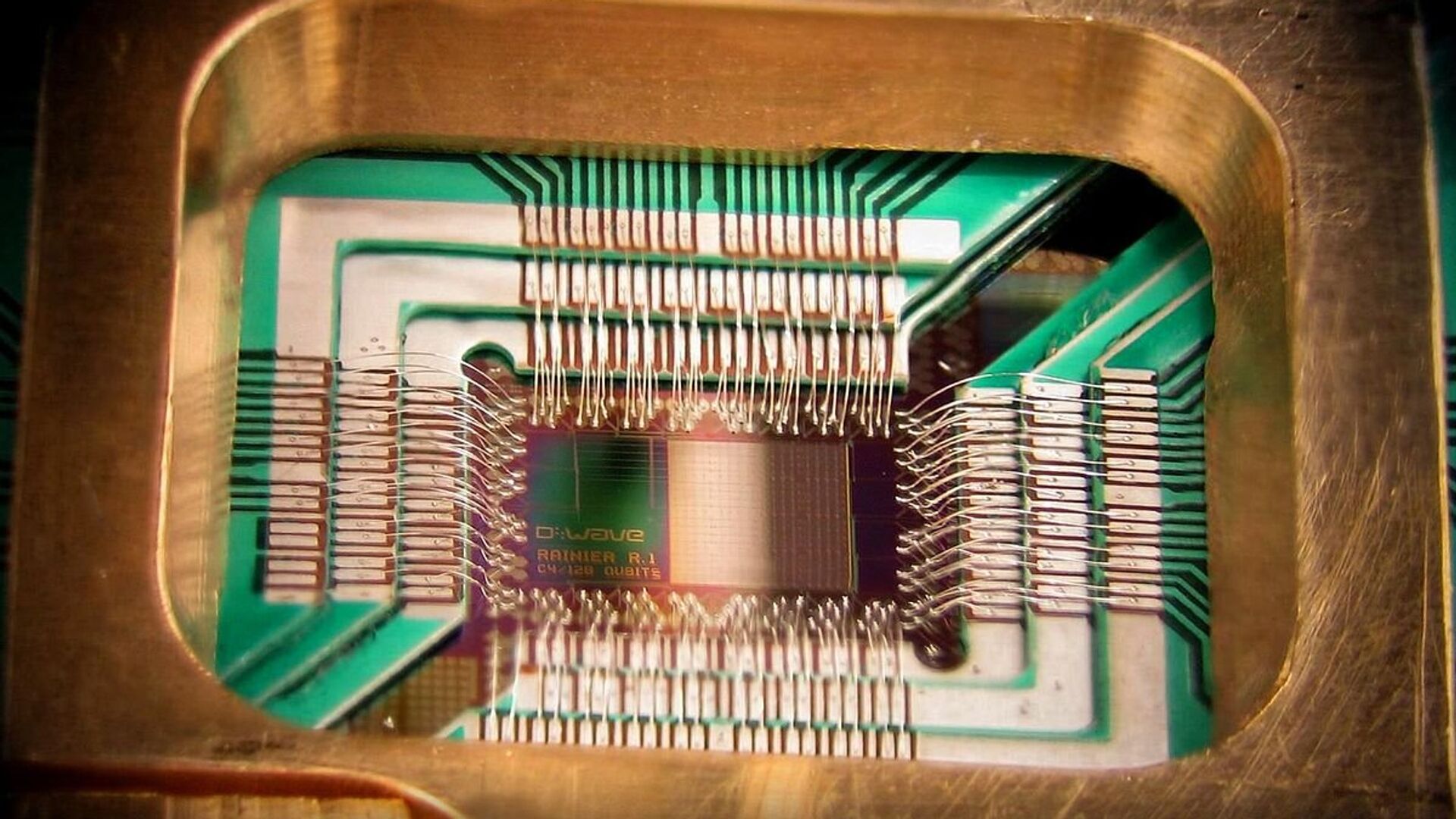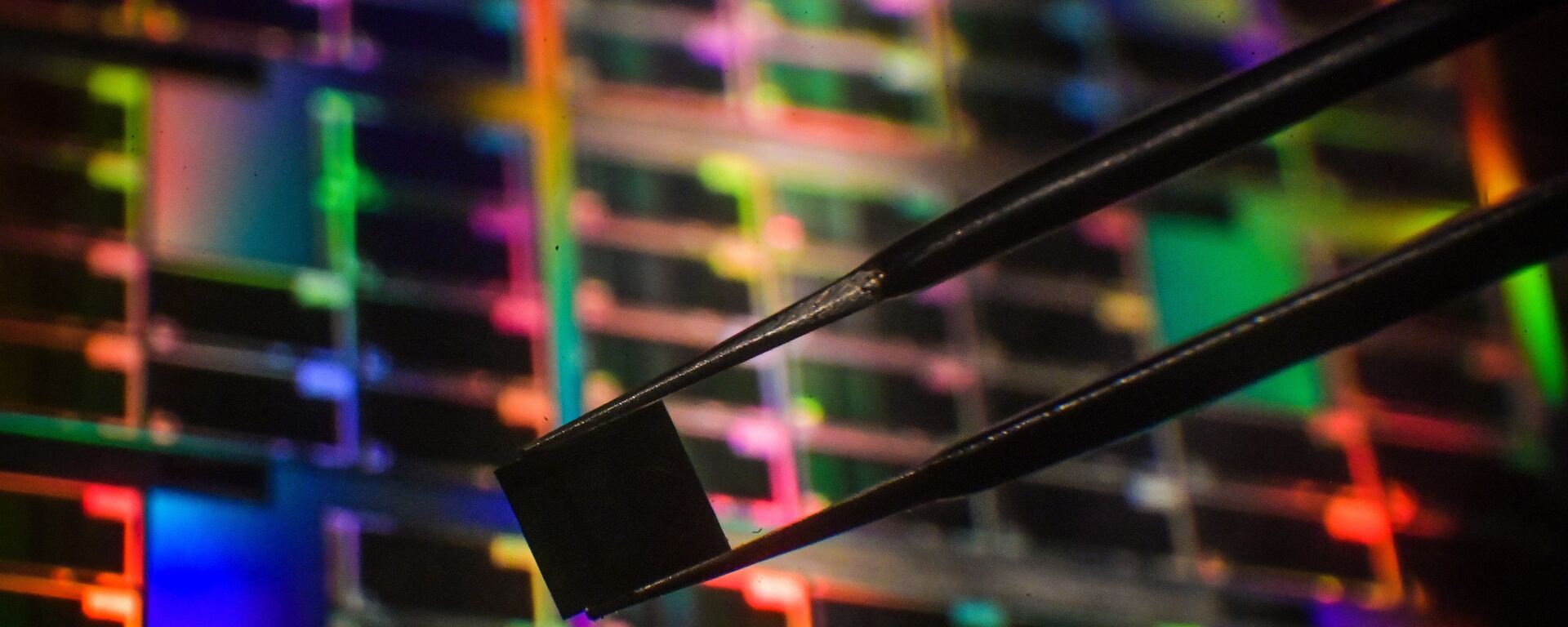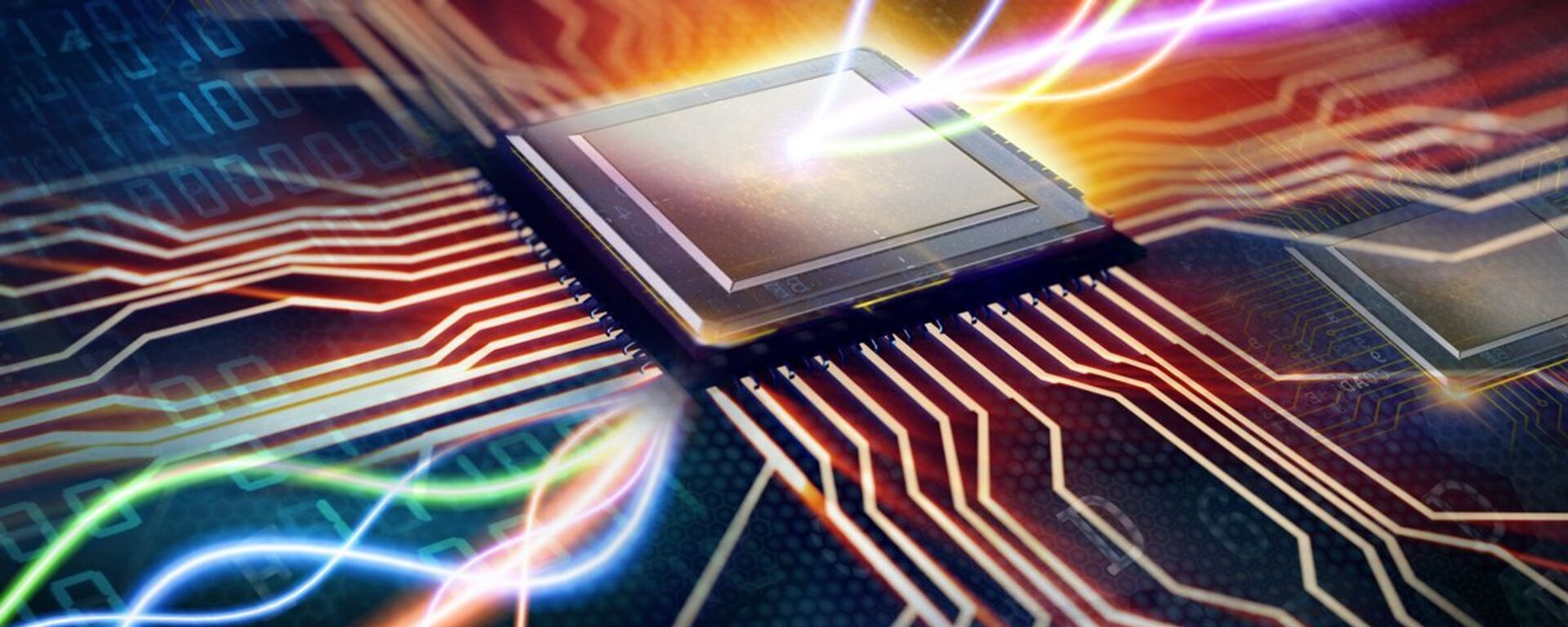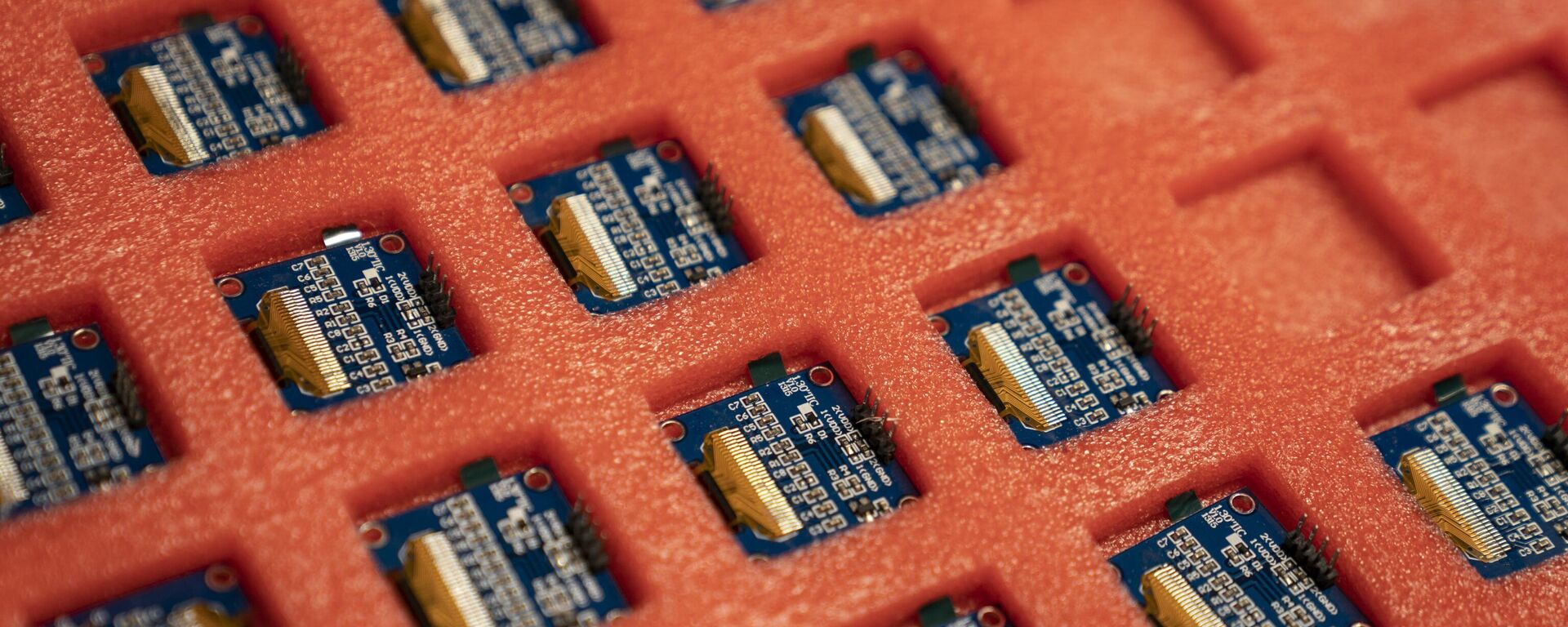https://sputnikglobe.com/20231009/us-bound-to-lose-big-if-it-chips-away-at-chinas-tech-sector-1114040146.html
US Bound to Lose Big If It Chips Away at China's Tech Sector
US Bound to Lose Big If It Chips Away at China's Tech Sector
Sputnik International
Some lawmakers in Washington are urging President Joe Biden to prohibit American companies from working on RISC-V chip technology with China. Will their plan fly?
2023-10-09T14:52+0000
2023-10-09T14:52+0000
2023-10-09T14:51+0000
china
joe biden
washington
chips
world
beijing
nvidia
intel
qualcomm
huawei
https://cdn1.img.sputnikglobe.com/img/105351/85/1053518556_0:77:1200:752_1920x0_80_0_0_6bce193d18e55eb07d8199e9320f2f6d.jpg
The US has already slapped a series of restrictions on China's hi-tech sector in what international observers see as an attempt by Washington to hinder the Asian giant's technological rise. A year ago, on October 7, 2022, the United States introduced export controls curbing Beijing's ability to access and develop advanced computing and semiconductors. Earlier this month, the Biden administration warned the People's Republic of China (PRC) about its intent to further tighten export rules for chip-making tools and AI chips.Still, a group of US lawmakers believe that the Biden administration should go even further and impose restrictions on US-China RISC-V collaboration. Chairman of the House Select Committee on China Mike Gallagher, a Republican representative from Wisconsin, proposed to "require any American person or company to receive an export license prior to engaging with PRC (People's Republic of China) entities on RISC-V technology."The attempt to regulate RISC-V could add to the unfolding US-China battle over chip technology, per the Western press.RISC-V (Reduced Instruction Set Computer-V) is the open standard instruction set architecture (ISA) provided under royalty-free open-source licenses. The idea of RISC goes back to the 1980s and belongs to American computer pioneer David Patterson, who coined the term. The RISC-V standard was created by researchers at the University of California, Berkeley in 2010, who sought to develop a simple, open-standard ISA that could be used by anyone, free of charge.Over the last decade, RISC-V has been used as a popular "building block" for various solutions, starting from a smartphone chip hardware to advanced processors for artificial intelligence and super-computing. The concept has brought together thousands of developers and has given a boost to international hi-tech collaboration. In 2015 the RISC-V Foundation was established and is incorporated today as RISC-V International Association in Switzerland.According to American lawmakers, the PRC is "abusing RISC-V" and "exploiting a culture of open collaboration" among chip producers. "US persons should not be supporting a PRC tech transfer strategy that serves to degrade US export control laws," claimed Representative Michael McCaul, chairman of the House Foreign Affairs Committee, said in a statement to the Western mainstream press.The Chinese media lashed out at Washington's attempt to hinder global work on freely available chip technology by prohibiting US companies from sharing their "know-how". Per the Chinese, these efforts are doomed to failure and lack logical merit. Access to the technology cannot be restricted since it's open-source, the Chinese media emphasizes, adding that isolating US developers from using the technology won't work, either. Some Chinese observers suggest that the effort is nothing short of a political stunt by some Republican lawmakers, promoted for the sake of publicity.Apparently, the initiative was triggered by the fact that the Biden administration's attempts to curb China's technological development have largely failed, observers presume. Huawei’s new 5G smartphone Mate60 Pro is one glaring example of this. Remarkably, the device was presented to the public during US Commerce Secretary Gina Raimondo's state visit to Beijing.There has been a lot of controversy surrounding the smartphone's processor, the Kirin 9000S, with some arguing that China managed to master itself in producing 7nm, while the others suggesting that Kirin 9000S was built on a 14nm node but has special features allowing 7nm performance. In any event, the new product demonstrated to the Biden administration (and Gina Raimondo) that China's technological rise has not been stopped or slowed by US economic restrictions.In addition to that, some Chinese media has drawn attention to the fact that US-made equipment is still widely available in the PRC despite export controls.But that is not all: US big chip makers are campaigning against crackdowns on China's hi-tech sector, according to the American media. It was reported that Nvidia, Intel and Qualcomm – three of the world's biggest chip manufacturers – have challenged the White House's China policy since July, allegedly slowing down Team Biden's sanctions spree.The companies warned Biden officials that a US pullback "could accelerate China's development of an independent chip industry" opening the door to a scenario where Chinese-created chips would call the shots in the global market rather than American-designed processors. That could deal a heavy blow to the US leadership in semiconductors, advanced technology and AI, according to them. Per the US newspaper, this campaign led to the delay of new restrictions against China and at the same time provoked a storm of criticism from China hawks in the US Congress.The American media admits that given that the US and China's economies are intertwined, and any harsh move against Beijing would backfire on Washington. Keep in mind that the PRC accounts for a third of the global semiconductor market and over $50 billion in total annual revenue for Nvidia, Intel and Qualcomm. Furthermore, China's reciprocal measures gave US hi-tech enterprises the shivers: first, Beijing slapped sanctions on American memory chip company Micron Technology; second, the PRC imposed export controls on rare earth minerals.Earlier this month, three Tech CEOs, namely Patrick Gelsinger (Intel), Jensen Huang (Nvidia) and Cristiano Amon (Qualcomm), met with Secretary of State Antony Blinken, Secretary of Commerce Gina Raimondo and US National Security Advisor Jake Sullivan and made a stark warning to Team Biden about the future dire consequences of the US-China decoupling. Time will tell whether or not this warning fell on deaf ears.
https://sputnikglobe.com/20230810/why-is-tsmc-building-a-multibillion-dollar-semiconductor-chip-factory-in-germany-1112491419.html
https://sputnikglobe.com/20230806/us-policy-to-curb-chinese-chip-industry-could-backfire---south-korean-lawmaker-1112417681.html
https://sputnikglobe.com/20230704/has-china-just-checkmated-the-us-by-banning-rare-earth-exports-1111663181.html
https://sputnikglobe.com/20230522/beijing-banning-micron-means-china-has-mastered-chip-making-1110523565.html
china
washington
beijing
Sputnik International
feedback@sputniknews.com
+74956456601
MIA „Rossiya Segodnya“
2023
News
en_EN
Sputnik International
feedback@sputniknews.com
+74956456601
MIA „Rossiya Segodnya“
Sputnik International
feedback@sputniknews.com
+74956456601
MIA „Rossiya Segodnya“
chip, microchip, semiconductor, chip-makers, chip-making tool, chinese chips, us chip makers, us chip manufacturers, chips act, biden semiconductor export restrictions, risc-v, possible risc-v restrictions, risc-v open-source, china hawks, china's ban micron, china export limits rare earths, us-china trade
chip, microchip, semiconductor, chip-makers, chip-making tool, chinese chips, us chip makers, us chip manufacturers, chips act, biden semiconductor export restrictions, risc-v, possible risc-v restrictions, risc-v open-source, china hawks, china's ban micron, china export limits rare earths, us-china trade
US Bound to Lose Big If It Chips Away at China's Tech Sector
Some lawmakers in Washington are urging President Joe Biden to prohibit American companies from working on RISC-V chip technology with China. Will their plan fly?
The US has already slapped a series of restrictions on China's hi-tech sector in what international observers see as an attempt by Washington to hinder the Asian giant's technological rise. A year ago, on October 7, 2022, the United States introduced export controls curbing Beijing's ability to access and develop advanced computing and semiconductors. Earlier this month, the Biden administration warned the People's Republic of China (PRC) about its intent to
further tighten export rules for chip-making tools and AI chips.
Still, a group of US lawmakers believe that the Biden administration should go even further and impose restrictions on US-China RISC-V collaboration. Chairman of the House Select Committee on China Mike Gallagher, a Republican representative from Wisconsin, proposed to "require any American person or company to receive an export license prior to engaging with PRC (People's Republic of China) entities on RISC-V technology."
The attempt to regulate RISC-V could add to the unfolding US-China battle over chip technology, per the Western press.
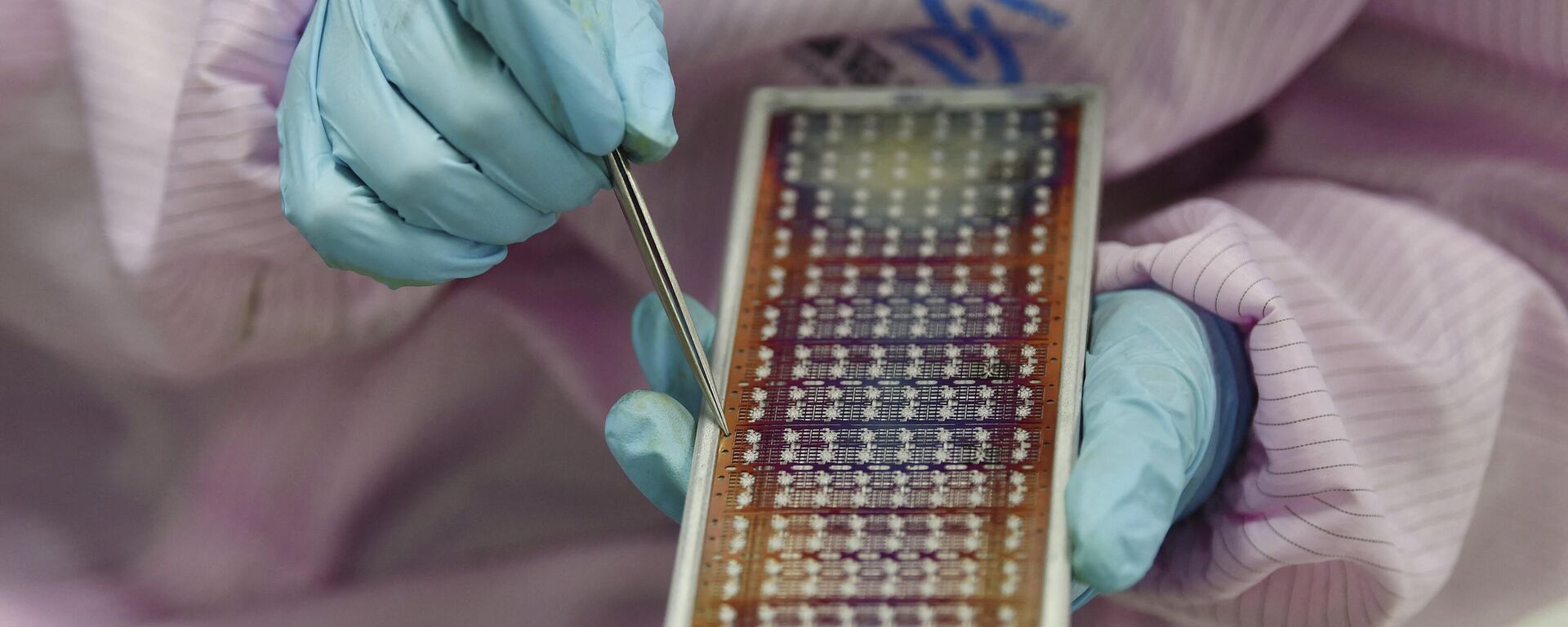
10 August 2023, 17:39 GMT
RISC-V (Reduced Instruction Set Computer-V) is the open standard instruction set architecture (ISA) provided under royalty-free open-source licenses. The idea of RISC goes back to the 1980s and belongs to American computer pioneer David Patterson, who coined the term. The RISC-V standard was created by researchers at the University of California, Berkeley in 2010, who sought to develop a simple, open-standard ISA that could be used by anyone, free of charge.
Over the last decade, RISC-V has been used as a popular "building block" for various solutions, starting from a smartphone chip hardware to advanced processors for artificial intelligence and super-computing. The concept has brought together thousands of developers and has given a boost to international hi-tech collaboration. In 2015 the RISC-V Foundation was established and is incorporated today as RISC-V International Association in Switzerland.
According to American lawmakers, the PRC is "abusing RISC-V" and "exploiting a culture of open collaboration" among chip producers. "US persons should not be supporting a PRC tech transfer strategy that serves to degrade US export control laws," claimed Representative Michael McCaul, chairman of the House Foreign Affairs Committee, said in a statement to the Western mainstream press.
The Chinese media lashed out at Washington's attempt to hinder global work on freely available chip technology by prohibiting US companies from sharing their "know-how". Per the Chinese, these efforts are doomed to failure and lack logical merit. Access to the technology cannot be restricted since it's open-source, the Chinese media emphasizes, adding that isolating US developers from using the technology won't work, either. Some Chinese observers suggest that the effort is nothing short of a political stunt by some Republican lawmakers, promoted for the sake of publicity.
Apparently, the initiative was triggered by the fact that the Biden administration's attempts to
curb China's technological development have largely failed, observers presume.
Huawei’s new 5G smartphone
Mate60 Pro is one glaring example of this. Remarkably, the device was presented to the public during
US Commerce Secretary Gina Raimondo's state visit to Beijing.
There has been a lot of controversy surrounding the smartphone's processor, the Kirin 9000S, with some arguing that China managed to master itself in producing 7nm, while the others suggesting that Kirin 9000S was built on a 14nm node but has special features allowing 7nm performance. In any event, the new product demonstrated to the Biden administration (and Gina Raimondo) that China's technological rise has not been stopped or slowed by US economic restrictions.
In addition to that, some Chinese media has drawn attention to the fact that US-made equipment is still widely available in the PRC despite export controls.
But that is not all: US big chip makers are campaigning against crackdowns on China's hi-tech sector, according to the American media. It was reported that Nvidia, Intel and Qualcomm – three of the world's biggest chip manufacturers – have challenged the White House's China policy since July, allegedly slowing down Team Biden's sanctions spree.
The companies warned Biden officials that a US pullback "could accelerate China's development of an independent chip industry" opening the door to a scenario where Chinese-created chips would call the shots in the global market rather than American-designed processors. That could deal a heavy blow to the US leadership in semiconductors, advanced technology and AI, according to them. Per the US newspaper, this campaign led to the delay of new restrictions against China and at the same time provoked a storm of criticism from China hawks in the US Congress.
The American media admits that given that the US and China's economies are intertwined, and any harsh move against Beijing would backfire on Washington. Keep in mind that the PRC accounts for a third of the global semiconductor market and over $50 billion in total annual revenue for Nvidia, Intel and Qualcomm. Furthermore, China's reciprocal measures gave US hi-tech enterprises the shivers: first, Beijing slapped sanctions on American memory chip company Micron Technology; second, the PRC imposed export controls on
rare earth minerals.
Earlier this month, three Tech CEOs, namely Patrick Gelsinger (Intel), Jensen Huang (Nvidia) and Cristiano Amon (Qualcomm),
met with Secretary of State Antony Blinken, Secretary of Commerce Gina Raimondo and US National Security Advisor Jake Sullivan and made a stark warning to Team Biden about the future dire consequences of the US-China decoupling. Time will tell whether or not this warning fell on deaf ears.
